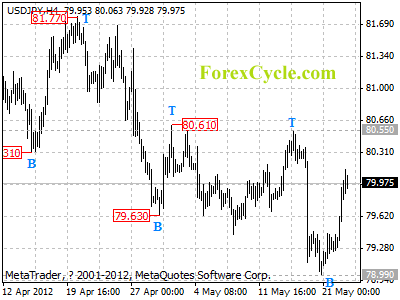By TraderVox.com
 Tradervox (Dublin) – The EU leaders are expected to meet today in a meeting to discuss the prospects of the monetary union. The discussions at the meeting are expected to heat up as Angela Merkel, the German Chancellor, and the new French President Francoise Hollande seek to present their ideas on how the debt crisis should be handled. Hollande is opposed to Merkel’s led austerity drive and proposes the introduction of euro bond to curb the debt crisis in the region. Discussions about the Greece are also expected to take center stage during the meeting.
Tradervox (Dublin) – The EU leaders are expected to meet today in a meeting to discuss the prospects of the monetary union. The discussions at the meeting are expected to heat up as Angela Merkel, the German Chancellor, and the new French President Francoise Hollande seek to present their ideas on how the debt crisis should be handled. Hollande is opposed to Merkel’s led austerity drive and proposes the introduction of euro bond to curb the debt crisis in the region. Discussions about the Greece are also expected to take center stage during the meeting.
As the leaders prepares to meet, the Canadian dollar has improved against most peers as risk appetite returned in the market, even though is for a short time. Investors are waiting to see what the leaders will decide concerning the status of Greece in the euro zone. EU leaders seem united in doing everything possible to keep Greece in the single currency bloc and that is what is raising the risk appetite in the market. After meeting with new French Finance Ministers, Germany’s Finance Minister Wolfgang Schaeuble reiterated that European officials will do everything possible to keep Greece in the 17-nation trading bloc.
As the EU leaders meet, Dean Popplewell who is a chief currency strategist at Oanda Corp indicated that the market is playing it very tight prior to announcement of the leaders’ decision. Investors will also keep a close eye on what leaders will say during the meeting and they are particularly concerned about positions taken by French president and German Chancellor who are seen as key players in ensuring the success of austerity measures.
Any sign of consensus will spur risk appetite that will lead to higher demand for higher yielding currencies. The Canadian dollar has already started showing some improvement as it improved by 0.6 percent against the euro to trade at C$1.2963 per euro as it gained for the second day. However, the current risk appetite was not enough to push the loonie against the greenback where it dropped 0.5 percent to trade at C$1.0224, it had earlier gained by 0.2 percent as it tries to find some footing.
Disclaimer
Tradervox.com is not giving advice nor is qualified or licensed to provide financial advice. You must seek guidance from your personal advisors before acting on this information. While we try to ensure that all of the information provided on this website is kept up-to-date and accurate we accept no responsibility for any use made of the information provided. Opinions expressed at Tradervox.com are those of the individual authors and do not necessarily represent the opinion of Tradervox.com or its management.
Article provided by TraderVox.com
Tradervox.com is a Forex News Portal that provides real-time news and analysis relating to the Currency Markets.
News and analysis are produced throughout the day by our in-house staff.
Follow us on twitter: www.twitter.com/tradervox



 Tradervox (Dublin) – The Forex markets were quiet in the Asian session with the Euro, Pound, Yen and the Franc trading flat. However bullish momentum was visible in the commodity currencies, Canadian Dollar and the Australian Dollar, supported by Chinese government comments to take on measures to boost growth, thereby driving up demand for commodities.
Tradervox (Dublin) – The Forex markets were quiet in the Asian session with the Euro, Pound, Yen and the Franc trading flat. However bullish momentum was visible in the commodity currencies, Canadian Dollar and the Australian Dollar, supported by Chinese government comments to take on measures to boost growth, thereby driving up demand for commodities. Tradervox (Dublin) – Commodity sensitive currencies have taken a hit in the recent weeks following the resurgence of debt crisis and political uncertainty in euro area. The New Zealand currency has taken a beating against the US dollar as risk aversion takes center stage in the bourse. The pair is expected to continue on the downward trend during this week as weak financial data is expected from New Zealand this week.
Tradervox (Dublin) – Commodity sensitive currencies have taken a hit in the recent weeks following the resurgence of debt crisis and political uncertainty in euro area. The New Zealand currency has taken a beating against the US dollar as risk aversion takes center stage in the bourse. The pair is expected to continue on the downward trend during this week as weak financial data is expected from New Zealand this week.